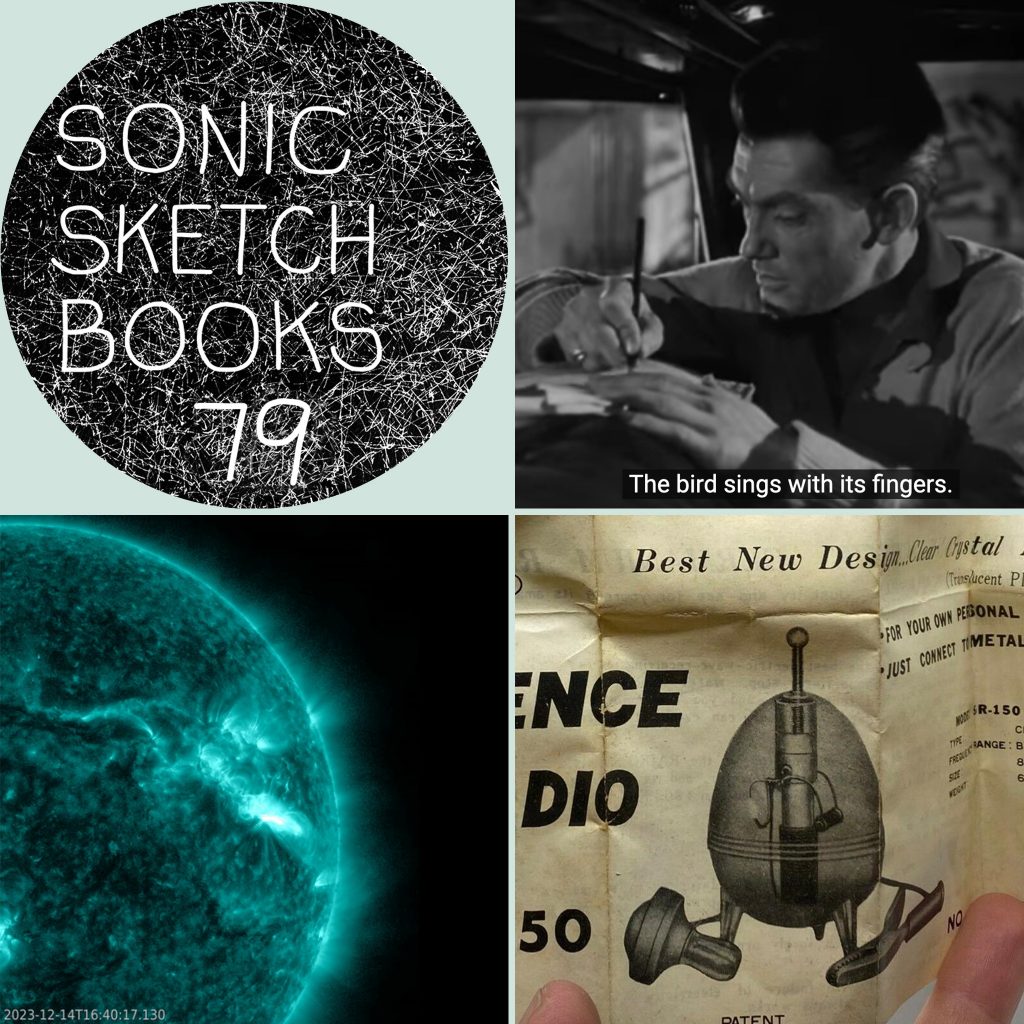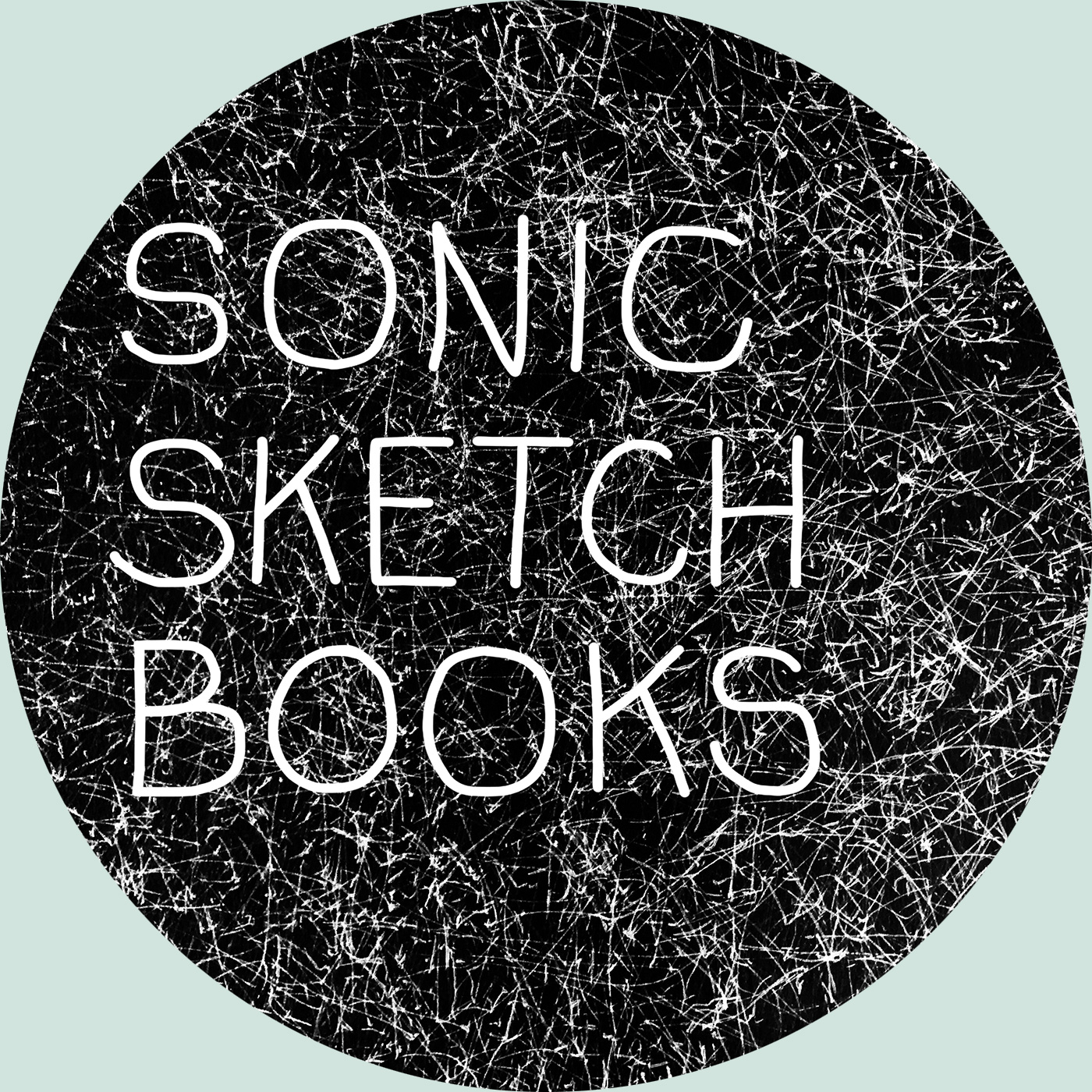
release date: 19 December 2023
listen on soundcloud
Around midnight on December 14th, 2023, the Sun emitted an unusually strong solar flare—an unimaginably vast and powerful eruption of primary cosmic energy. The event was observed and monitored by terrestrial, atmospheric, and space-wandering instruments of various government and scientific agencies of humans. With a welter of extraordinary imagery and catastrophic predictions, it was reported widely in global media.
This significant space weather event occurred while I was developing this episode in response to a prompt by longtime listener Philip Toydog to ‘do something with UTC’—Coordinated Universal Time—and, more specifically, the sonic experience of UTC, familiar to many who have dabbled in listening to short-wave or high-frequency radio transmissions.
As a boy, I had a germanium crystal radio – a Japanese-made SR-150 Science Egg Radio. The Egg in the title described its shape – a clear plastic egg containing a tangle of wires and a giant diode. It required no power – an alligator clip attached to anything metal (my bed frame) that would act as an aerial, and a decidedly hospital-like mono earpiece was used to listen discreetly. Tuning was by winding a thin steel columnar screw up or down to locate AM signals. I did enjoy finding the ABC and listening to music programs, but I also enjoyed the spaces between, the ever varying static. A couple of decades later, I bought a Sony World Radio with shortwave capability and explored the incredible ephemeral sounds of short-wave transmissions coming from who-knew-where bouncing from the ionosphere.
One of these was Coordinated Universal Time – a hypnotic crackle-and-fade 60 beats per minute pulsation periodically defined by two American-accented voices – a woman and a man – announcing, once a minute, the Universal Time moment about to be traversed. You can read about UTC in the usual places.
Thinking back on my 80s and 90s interest in short wave radio, the enigmatic world of Number Stations came to mind, which in turn prompted a reminiscence of seeing Jean Cocteau’s 1950 film Orphee, at a tiny theatrette in a federal government building in Brisbane where cinematheque films borrowed from the National Library were screened maybe only once a month, on a Thursday night to an audience of maybe 20 subterranean cinephiles.
One aspect of that film that fascinated me is the use of a car radio as a site where the titular angry self-obsessed poet listens to and transcribes surrealistic sentences declaimed (in French of course) by a resonant deep male voice, plagiarising transmissions perhaps emanating from the underworld of the dead. Jean Cocteau confirmed that this oracular radio was inspired by BBC radio broadcasts he heard during the Nazi occupation of France – mysterious apparent nonsense of numerals, words and musical fragments carrying coded messages from the British military to French resistance fighters during WW2. Prototypical examples of what would come to be known as Numbers Stations – tools of trade of state-based secret service organisations.
There’s much more, of course, but save to say, this new composition crowds various of these inspirations together with my modular musings into a drifting enigmatic roll on the plasma sands of the ionospheric beach gazing into the stellar maw of our solar system as it coughs a chaotic bolus of x-rays and plasma our way.
